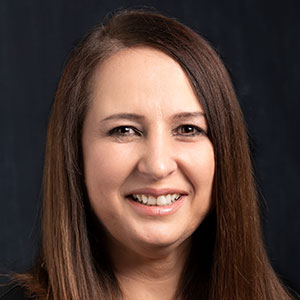Across the North American Division (NAD), more than 60 percent of PreK-10 schools are labeled as “small schools.”1 In Adventist education, a small school is loosely conceptualized as having three or fewer teachers and hosting multigrade classrooms with three or more grades in each. In today’s educational landscape, single, and perhaps split-grade classrooms, appear to be the norm, and small schools are more reminiscent of the one-room schoolhouse of yesteryear. However, multigrade classrooms in small schools continue to flourish. The unique teaching and learning opportunities this environment provides have caught the attention of larger, even secular schools, so much so that they intentionally provide multigrade and multiage experiences.
As co-coordinators of this special issue on small, multigrade schools, we came to this topic from different viewpoints, but with the same end goal: to provide an exploration of theory and practice to support pre- and in-service teachers who work in small school environments. Maria Bastien Valenca spent most of her K-8 years as a student in small schools, and with two teachers as her parents. Some of her best school memories are rooted in the freedom of flexibility that a small school provides teachers—explorations of science and art through black-and-white photography labs, math and home economics in the kitchen, and the opportunity to take on responsibilities in the classroom, such as leading fundraising efforts and working on a small school newspaper. Anneris Coria-Navia was inspired to undertake this issue as she searched for ways to disseminate a research project undertaken with Jerome Thayer, Elissa Kido, and Aimee Leukert on excellence in small schools, the results of which are also found in this issue. This research stemmed from the need to celebrate the excellent work that small schools were doing.
As both our teams pursued research on small schools, we were connected by the teachers and conference superintendents with whom we were working, who desired and supported the need for another issue of JAE dedicated to this topic. In addition to our passion for small schools, we share a strong desire to support future educators in our care, as well as provide ongoing resources and support for teachers in the field. As education faculty, we were regularly faced with the challenge that there is no textbook on small schools, especially one that honors our distinct Adventist worldview, where the world of education and redemption are one.
Anneris Coria-Navia wanted to honor the contributions that her students have made over time by sharing some of the specific ways that what might be considered “usual” educational practice would not work in a small school. Maria Bastien Valenca wanted to ensure that teacher candidates could feel both prepared and perhaps excited about the possibilities that such an environment provides.
Martha Havens, in a previous special issue of JAE, explored the importance of the teaching principal putting teaching and instruction first. She noted that at the time of publication, “the North American Division Principal’s Handbook list[ed] 78 activities as ‘Significant Areas of Responsibility’ for a school administrator,” which, as Havens noted, did not even include “responsibility for finances, personnel, and curriculum and instruction.”2 Teaching in a small school, whether a one-, two- or three-teacher school, includes wearing multiple hats (taking on a variety of responsibilities) that one might not have when teaching a single-grade classroom.
The topics presented in this issue explore aspects of these many roles and responsibilities and illustrate areas of interest that have arisen through conversations with students, teachers, superintendents, and other stakeholders connected with Adventist education. To balance the importance of research, theory, and concrete classroom practice, the articles in this issue come from a wide variety of educators in the field, from university researchers to local volunteers, each providing their expertise in support of pursuing excellence in small schools.
- Coria-Navia et al. highlight excellence in Adventist education as documented through observations and interviews with educators and educational administrators throughout the North American Division. The authors emphasize the significant role small schools serve within the ecology of Seventh-day educational institutions.
- Garcia, Slikkers, and Bailey discuss what it means to be trauma-informed educators. They also consider how small schools can intentionally create learning environments that help students feel safe and supported—emotionally, socially, and academically. Their work provides strategies for the multigrade teacher’s toolbox to support student learning in the face of the challenges students face today.
- Imasiku et al. explore a feature that, in recent years, most teachers have needed to grapple with—online education. Their study explores pragmatic approaches specifically for the unique circumstances of small schools and teachers—considering how to meet student learning needs utilizing online resources, discussing collaboration, artificial intelligence, open educational resources, and asynchronous learning that addresses the unique circumstances of small schools.
- Using her background in elementary education, Scott provides recommendations for teachers in small schools as they consider how best to run their library program, highlighting the impact of a well-stocked library on student achievement.
- Berry writes from the perspective of one of the essential members of the small-school support team—the volunteer. She shares practical suggestions for assisting within the library environment.
- Wallace, Bowlby, and Clements explore Problem-based Learning (PBL), entrepreneurship, and innovation as a tool for teachers in small schools to involve students across multiple grade levels, simultaneously helping them take ownership of their learning experiences and preparing them for real-life opportunities.
- Ramoutar considers what specially designed instruction might look like for students with special needs within the small-school environment. She presents a framework that captures evidence of special education in action and explores how classroom teachers working in small private schools can enact special-education pedagogical practices.
- The issue also includes Ward's perspective on a three-story approach to teaching Scripture and engaging youth and young adults, and Norton Lambert’s review of Trevor Lloyd’s Listening in the Morning—Devotional Readings for Teachers.
As the articles in this issue demonstrate, the small-school environment is unique. While it presents challenges, it also provides opportunities that make it an asset to Adventist education worldwide. We hope readers take from this issue principles and best practices that will enhance teaching and learning, grow faith, and promote excellence in all schools.
Recommended citation:
Anneris Coria-Navia and Maria Bastien Valenca, “Small Schools: An Asset to Adventist Education,” The Journal of Adventist Education 84:3 (2022): 3, 55. https://doi.org/10.55668/SRPB7175
The JAE staff express heartfelt appreciation for the many hours Drs. Coria-Navia and Bastien Valenca devoted to selecting topics and authors, providing input on article content, and promptly responding to the editor’s questions during the planning and production of this issue.
REFERENCES
- North American Division Office of Education, 2022-2023 Adventist Education Statistics: https://v1.adventisteducation.org/phone/stat-copy-2.html.
- Martha L. D. Havens, “An 18-Hour Day—Which Hat Do I Wear? Teacher or Principal?” The Journal of Adventist Education 61:3 (February/March 1999): 26: https://circle.adventistlearningcommunity.com/files/jae/en/jae199961032405.pdf.





